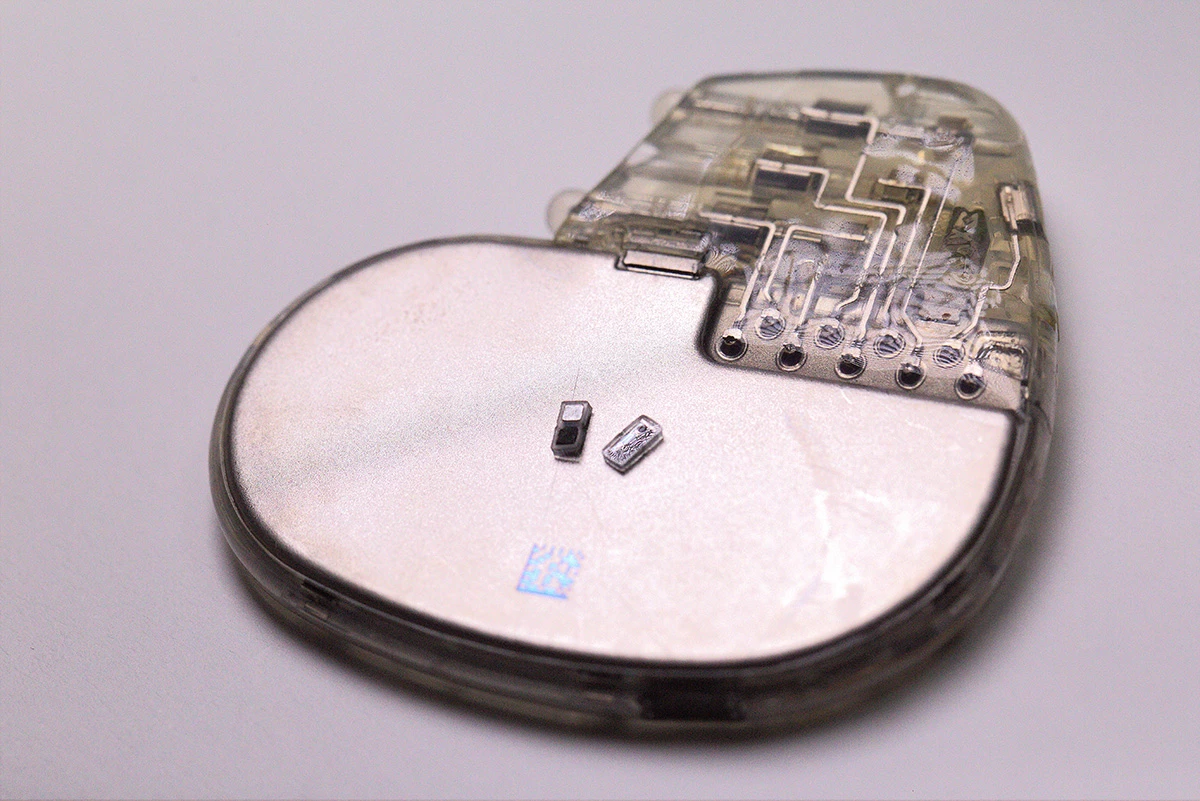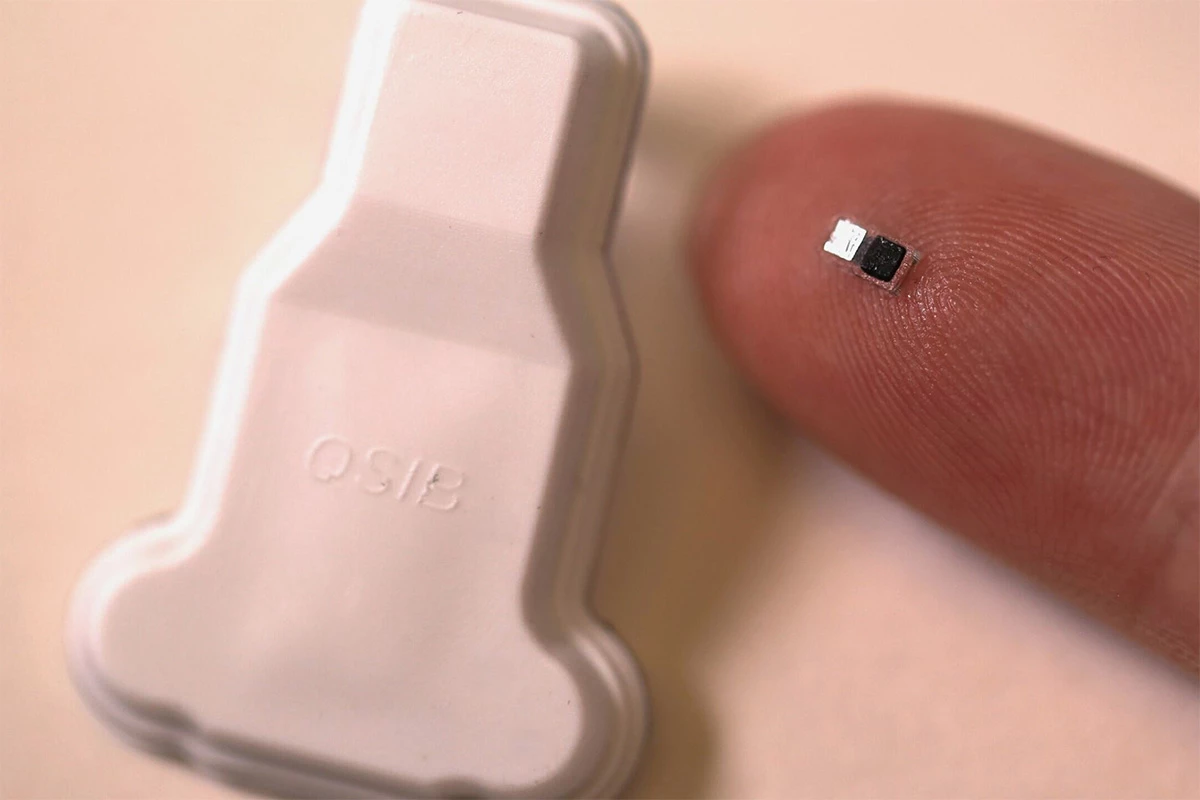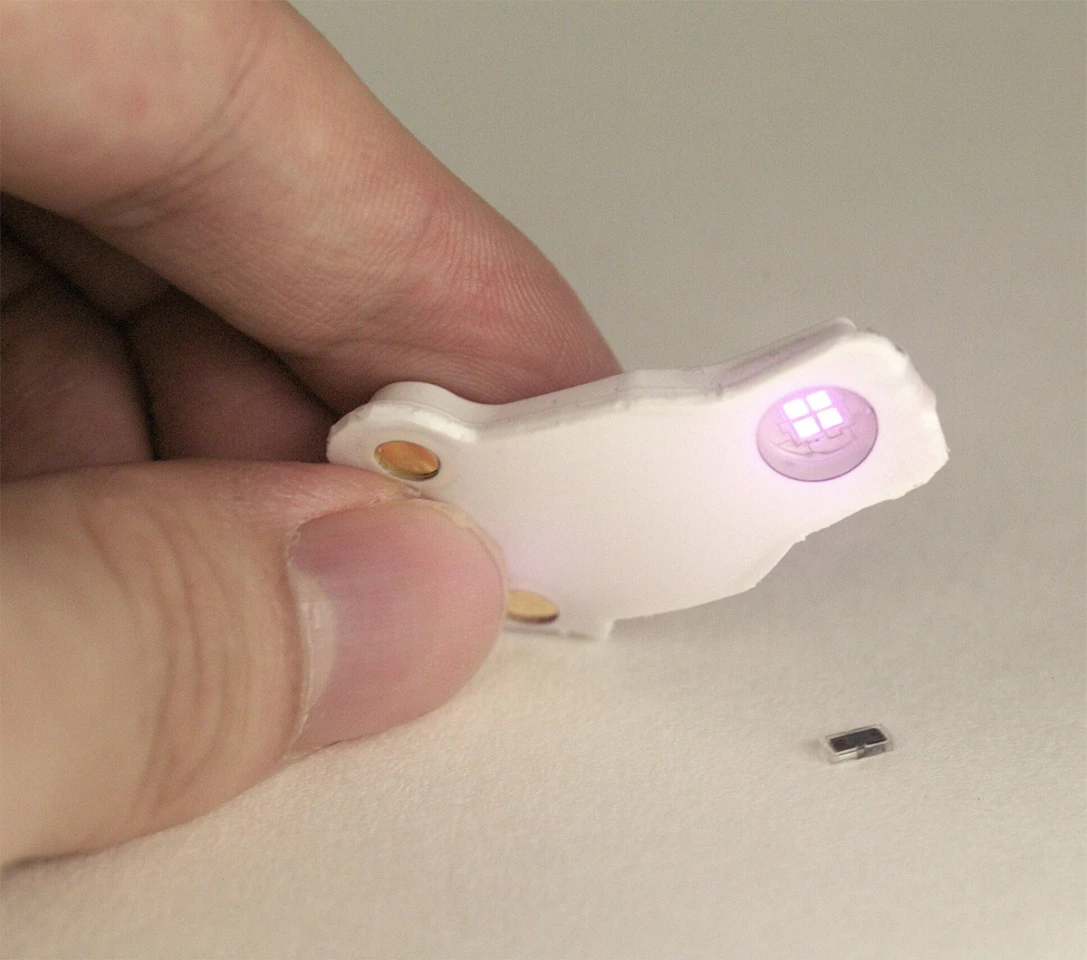Engineers at Illinois' Northwestern University have developed the tiniest pacemaker you'll ever see. It's several times smaller than a regular pacemaker, and it's designed for patients several times smaller than the average pacemaker user.
This device is dwarfed by a grain of rice, and can be injected into newborn babies with congenital heart diseases for temporary or long-term use with a regular syringe. About one in every 100 children are born with such defects.
This project was led by Northwestern professor John A. Rogers, who you might remember from clever inventions like a wearable to detect when singers are straining their vocal cords, and a diminutive gadget to deliver more realistic feedback than ever before. His team published a paper on this work in the journal Nature this week.

Describing the need for microscopic devices to help regulate abnormal heart rhythms in newborns, Rogers explained that "these children only need temporary pacing after a surgery. In about seven days or so, most patients’ hearts will self-repair. But those seven days are absolutely critical. Now, we can place this tiny pacemaker on a child’s heart and stimulate it with a soft, gentle, wearable device. And no additional surgery is necessary to remove it.”
Beyond its size, what's great about this design is that, since there's no surgery involved in installing or removing the pacemaker, there's no risk of infections and internal bleeding from these procedures. It's also made from biocompatible components – so it can dissolve into the body's fluids when it's no longer needed.
This tiny pacemaker is powered by a galvanic cell, which transforms chemical energy derived from biofluids in contact with it inside the body into pulses of electricity sent to the heart through two metal electrodes. Despite its size, the researchers say it delivers as much stimulation as a regular pacemaker.

The pacemaker also has a light-activated switch, and this is paired with a small heart rate sensor that the patient wears on their chest. When the latter detects the patient's heart slowing below a certain rate, it automatically flashes a built-in infrared LED on and off in time with a normal heart rate to penetrate through the body and activate the pacemaker.

That's pretty nifty on its own; the researchers note that multiple pacemakers can be fitted onto the outside of the heart to tackle arrhythmias, be incorporated into heart valve replacements, and fitted into frameworks for transcatheter aortic valve replacements. They also believe this tech could find use in bioelectronic treatments to help nerves and bones heal.
Source: Northwestern University






